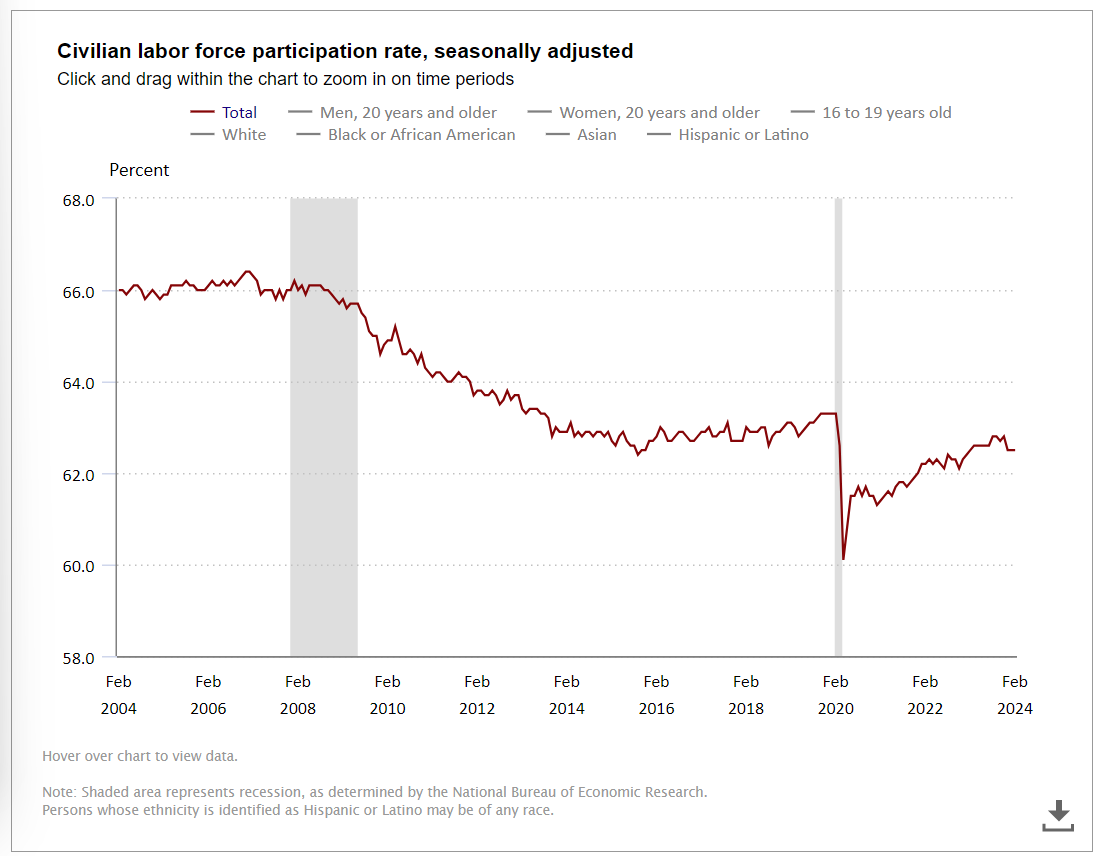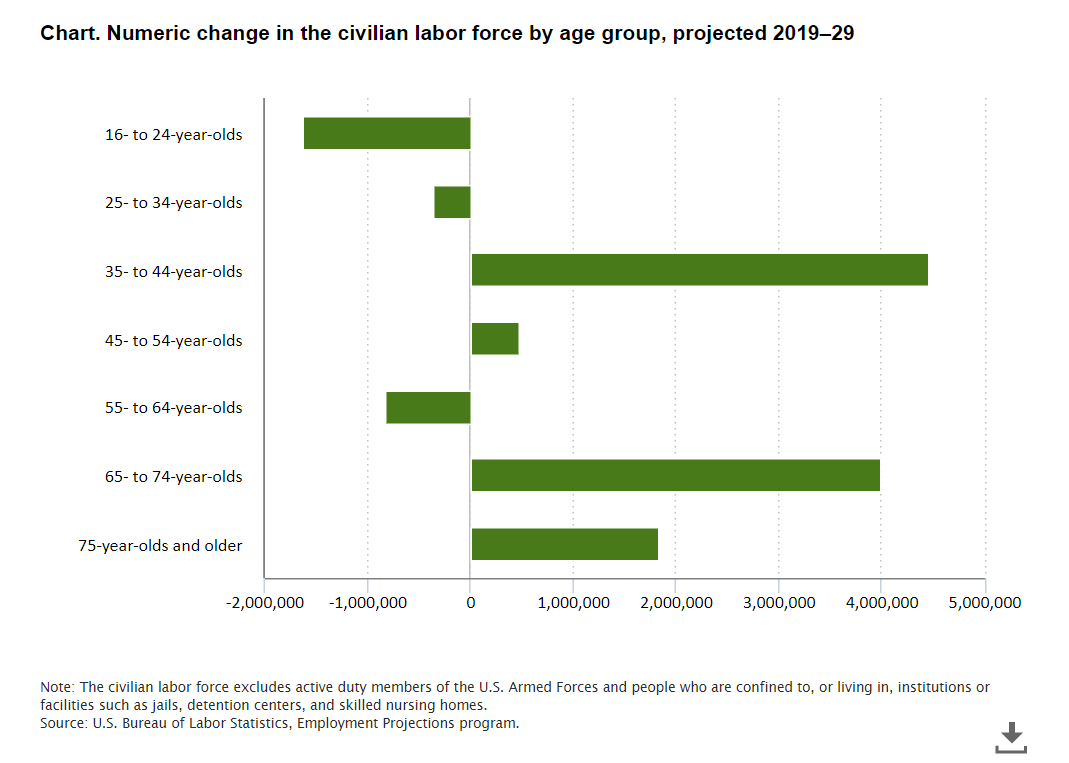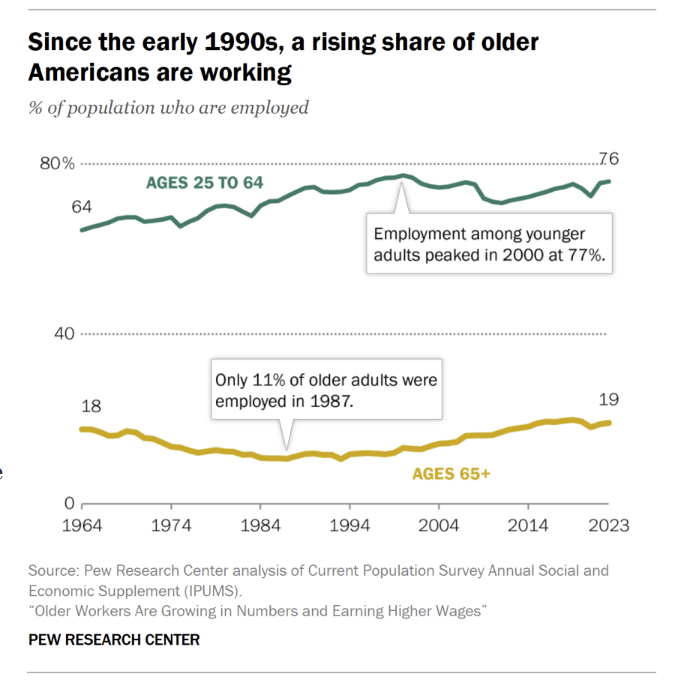The debate over generative AI and its impact on the workforce is just heating up since the technology hasn't scaled at most enterprises. One of the biggest questions to ponder is whether genAI's impact will be muted by demographics.
Last week, we covered the intersection of tech layoffs, generative AI and middle management, which is taking the biggest hit. The Daily Show's Jon Stewart also had an interesting riff on the "promise of AI."
It's easy to conclude that generative AI is going to take jobs from humans. But there's another argument that genAI will be needed just to maintain and improve productivity levels because there will be fewer workers. There’s a demographic donut hole in the workforce that may be partially ameliorated by genAI.
During Paychex's third quarter earnings call, CEO John Gibson highlighted how small and mid-sized businesses were struggling to find employees. Gibson also noted that the pace of retirements from Baby Boomers is only going to pick up. Meanwhile, generation X doesn't have the numbers to fill the institutional knowledge gap.
This post first appeared in the Constellation Insight newsletter, which features bespoke content weekly and is brought to you by Hitachi Vantara.
According to the Bureau of Labor Statistics, the civilian labor participation rate hasn't recovered from its pre-COVID-19 pandemic rate. And the US Census Bureau said that 16.8% of the population is 65 and older and projected to grow to 22% by 2040.

Gibson said Paychex is using AI to drive insights on retention as well as integrations with Indeed. Paychex's partnership with Visier will offer compensation insights.
He added:
"The simple fact is we have a generational change happening in the labor force. Participation rates remain below pre-pandemic levels and it's going to be very difficult given the rate of retirements that we're seeing in Baby Boomers to really see that change. And what you see in the prime age workers were actually at record highs. The problem is not enough prime age people to fill all the opportunities."
"We need to do more to allow businesses to invest in productivity and drive productivity enhancements and that's not going to replace workers. That's going to enable them to get the work done with less workers than are going to exist in the marketplace. I think this is a systemic problem."
Related: Middle managers and genAI | Why you'll need a chief AI officer | Enterprise generative AI use cases, applications about to surge | CEOs aim genAI at efficiency, automation, says Fortune/Deloitte survey
Gibson said there's a productivity gap that'll occur as younger workers replace older ones. The only nuance here is that older workers may not all leave the workforce on schedule.

Pew Research found that 19% of Americans ages 65 and older were employed in 2023, nearly double the share from 35 years ago. The typical worker age 65 or older earns $22 an hour.

Workers ages 75 and older are the fastest-growing age group in the workforce. Today, 9% of workers that age is employed. Blackrock CEO Larry Fink should be excited about that development given he sounded the alarm bells about retirement funding and noted that one fix to Social Security would be working longer. Living to age 80 isn't terribly uncommon today.
How these workforce dynamics play out is anyone’s guess. Today, it’s hard to reconcile layoffs in technology with rosier IT employment prospects outlined by CompTIA.
Bottom line: The generative AI hit to the workforce is inevitable, but there's a more nuanced position to take amid the doom and gloom. One thing is certain: Generative AI is going to be a public policy issue.


